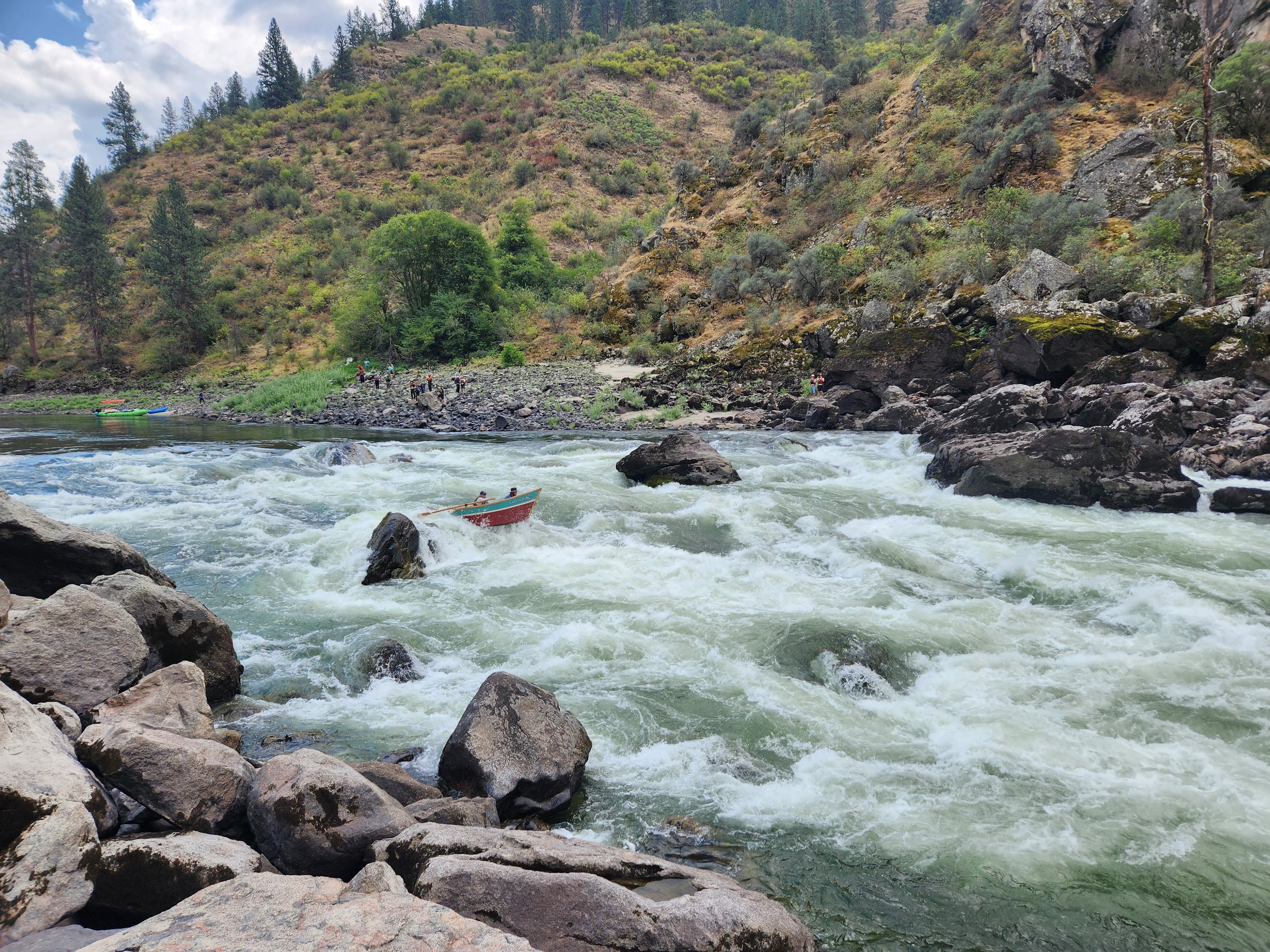Wild & Scenic River Campaign Updates, fall 2023
As Idaho Rivers United continues to focus on expanding Wild & Scenic River protections in the state, with a goal of doubling our protected river miles over the next five years, we have primarily set our sights on a few high-priority river sections and projects. Wild & Scenic River designation, we know, is achievable through open dialogue and collaboration with stakeholders across the state.
First, we have been in discussions with the Nez Perce Tribe to establish permanent protected status for the Lower Salmon River. Traversing the heart of the traditional lands of the Nimiipuu, or Nez Perce people, the Lower Salmon River contains an incredible volume of cultural monuments and immense cultural values. Within the Lower Salmon, there are hundreds of historical sites, including Coopers Ferry, which recently provided evidence of human occupation more than 16,000 years ago, supporting a theory of human migration into the interior of North America along coastlines and river corridors pushing back against the established ‘land bridge’ theories.
Descending over 1,000 feet before meeting the Snake River, this undammed section is truly remarkable and worthy of permanent protection. Comprising the final portion of one of the longest undammed rivers in North America, and the longest within the Columbia River Basin, the Lower Salmon River provides critical habitat for Endangered Species Act-listed anadromous salmonids and supports other native fish species such as white sturgeon, westslope cutthroat trout, redband trout, and lamprey.
The river corridor also boasts numerous sites that tell the story of the discovery of gold in Idaho and the broader west as well as the miners that flocked to the region in their pursuit. In more recent times, the river has served as the backbone for the economy of many towns and cities that have seen their economy shift away from extractive industries to those that revolve around tourism and the natural resources that abound along the river corridor
In addition to collaboration with the Nez Perce Tribe, we are working closely with our national partners at American Rivers and American Whitewater on this campaign.
Secondly, as you may likely know from our recent July conservation campaign, we are re-engaging in efforts to formally designate the North Fork of the Payette River and seek permanent protections for this deserving segment.
The North Fork is world-renowned for possessing some of the biggest and most challenging whitewater in North America while still being road-side with easy access. For decades river runners have flocked to the North Fork to hone their skills here before setting off for remote first decent attempts or challenging expeditions.
Despite its reputation, the North Fork is not home exclusively to class V river runners. The upper reaches of the “Cabarton” section provide a great class III offering. Floating through forested valley meanders before encountering steeper canyon drops, this stretch is a fantastic family float as well as a place to hone your skills before stepping up to more challenging rivers.
With ample camping and fishing opportunities along its banks, the North Fork provides unparalleled recreation and opportunities to connect with the natural world that extends well beyond the boating community. Eligible for designation as a Wild and Scenic River due to its recreational values, anyone who has spent any time along this stretch of river can attest to the value that the North Fork provides for our community and to visitors from near and far that is deserving of durable protections.
As with other Wild & Scenic campaigns, we will be engaging with our partners both in Idaho and nationally as we continue to pursue the protections that are well deserved for the North Fork.



